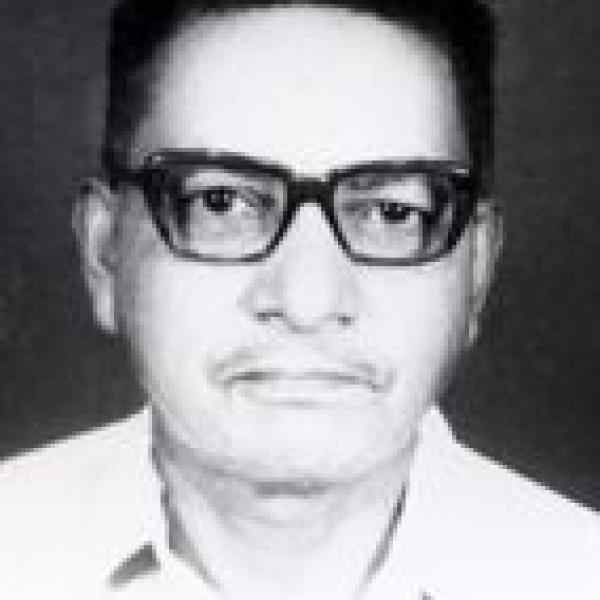Introduction
Samanta Bhadra Barua has developed a community based integrated adult literacy program in Bangladesh that combines income generation with education. Swanirvar Bangladesh (literally "self-reliant Bangladesh") plans to establish more than 10,000 adult literacy centers in the country.
The New Idea
Samanta Bhadra Barua has developed a program that integrates vocational training with literacy and development education. This two­fold approach provides a combination of motivational forces that encourage and enable adults to learn. He was able to develop a literacy curriculum specifically to meet the needs and resources of adult Bangladeshis based on extensive research he has conducted on adult populations in villages throughout Bangladesh. Samanta Bhadra realizes that merely providing literacy to Bangladeshi adults is not enough; people must also be given incentives to attain literacy and reason to use that newly acquired skill in their lives and workplaces. Literacy goes hand in hand with other development projects. Thus Samanta Bhadra's literacy programs work on developing the whole individual through skill development, vocational training and health awareness. His students leave Swanirvar able to adapt to a variety of situations and to find more rewarding employment.
The Problem
With 63 percent of the population illiterate, Bangladesh has one of the lowest literacy rates in the world. The vast majority of literacy programs in Bangladesh concentrate on children's education. Aggravating this condition is the present educational environment, which does a poor job of teaching children (especially those from educationally disadvantaged backgrounds) to read and almost nothing to enable adults to effectively learn literacy skills. The few established programs for adult education tend to have low success rates because they fail to take the adult students' priorities into account. The daily tasks of earning enough to feed and shelter their families occupy most adults, leaving little time to participate in training and education programs.Complicating matters is the widespread belief among many poor people that literacy is not useful because it is not linked with other skills development programs. Newly literate people frequently lapse back into illiteracy because they have little opportunity to use their skills.
The Strategy
Samanta Bhadra has already established his programs in 40 districts in Bangladesh. More than 1,200 of his adult literacy centers now exist throughout the country and each of these centers brings an average of five adults per year to the level of functional literacy. In total, he has already assisted 30,000 adults in obtaining functional literacy, which represents a doubling of literacy rates in many specific locations. In each school, literacy classes are combined with trade and technical training, allowing adults to earn additional income while they learn. This motivates adults to remain in the program longer. Adults are trained, for example, in agriculture, pisciculture, cane and bamboo work, sewing, carpentry and hairdressing. Samanta Bhadra tailors the lesson plans to the adult level by making sure that certain techniques that are effective for learners for all ages, such as role playing, visual aids and games, are appropriate to the interests and realities of the adult learners. The program is expanded and maintained by the use of the "each one teach one" system, in which the newly literate educate the new entrants into the program or help out their neighbors' learning process on a more informal basis. An additional incentive to participate in the literacy program is the availability of credit schemes Samanta Bhadra has established that help enable newly literate people to use their newly acquired skills to launch microenterprises. As a result of all these strategies, corollary benefits are being seen, such as a dramatic increase in the use of family planning in villages where Samanta Bhadra's program exists.Samanta Bhadra is constructing a program that will allow him to bring his program to every area of Bangladesh more systematically. First, he is conducting a village benchmark survey, which targets different populations and sets up a time line for approaching them with the program. Samanta Bhadra hopes to have his program instituted throughout Bangladesh within ten years, with 10,000 separate centers established in villages throughout the country. As important as the learning methodology is the way in which his programs are established and maintained in a community. He ensures their vitality and sustainability by locating the centers directly in the community and then helping the local people find a base of support from within the community itself. For example, the centers are set up in any community space that is available-primary schools, mosques, community centers, clubs and even private houses. This eliminates the need to pay for construction or rent, while also locating the program in familiar and convenient settings. Other resources are drawn from the local community, such as donations of chalk, blackboards, teaching aids, etc.
The Person
Samanta Bhadra received his bachelor's degree in engineering in San Francisco, California in 1948. He worked as an engineer until the early 1960s, at which point he decided to focus his talents and energies into helping others share his love of learning. He did so by developing basic educational materials from commonly available materials. His creations include alphabet blocks in the Bangla language made from bottle caps.He has received the National Award for his "Regional Literacy Materials Development" and several other national honors for his development of teaching materials. In the districts where he has been working, literacy levels are 48 percent, twice the national average.
